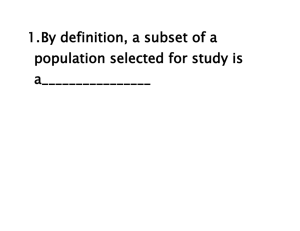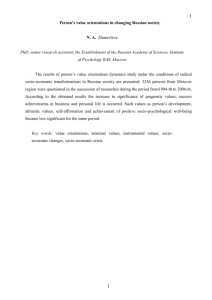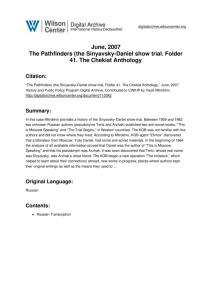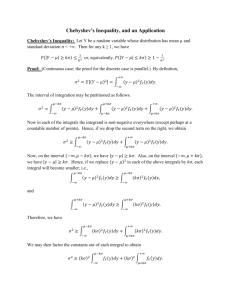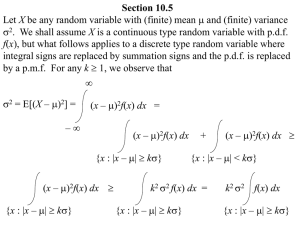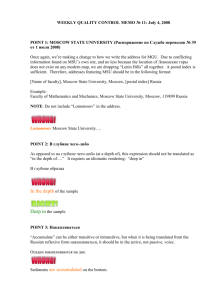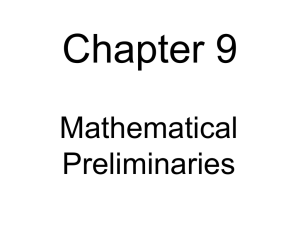Manuscript templates(word)
advertisement
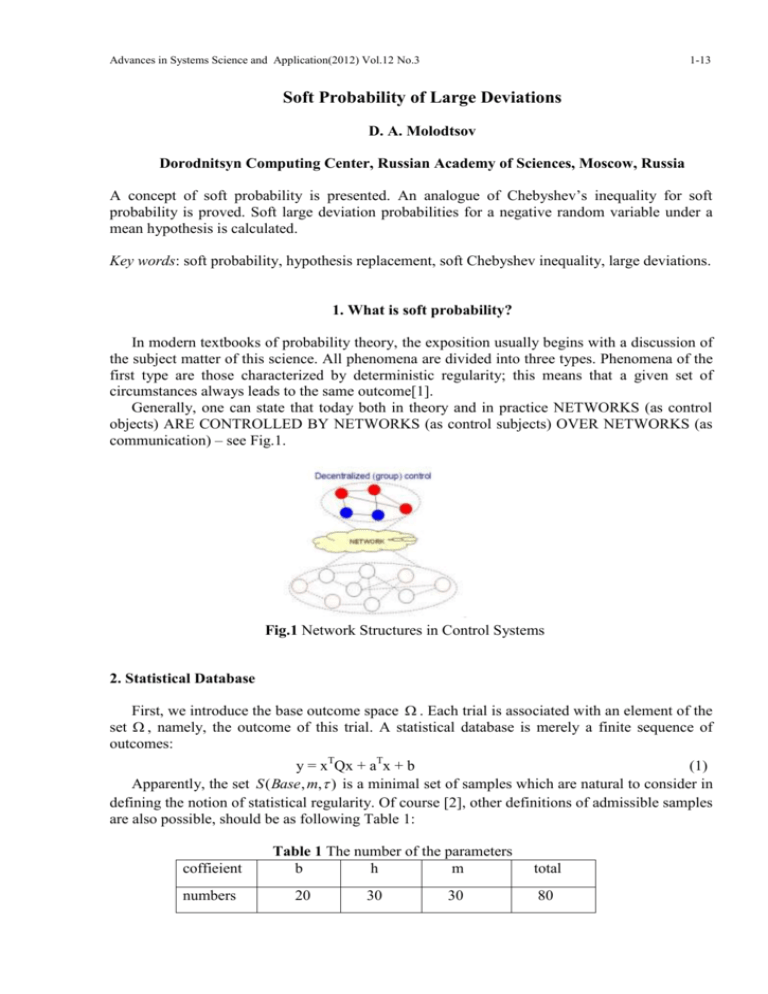
Advances in Systems Science and Application(2012) Vol.12 No.3 1-13 Soft Probability of Large Deviations D. A. Molodtsov Dorodnitsyn Computing Center, Russian Academy of Sciences, Moscow, Russia A concept of soft probability is presented. An analogue of Chebyshev’s inequality for soft probability is proved. Soft large deviation probabilities for a negative random variable under a mean hypothesis is calculated. Key words: soft probability, hypothesis replacement, soft Chebyshev inequality, large deviations. 1. What is soft probability? In modern textbooks of probability theory, the exposition usually begins with a discussion of the subject matter of this science. All phenomena are divided into three types. Phenomena of the first type are those characterized by deterministic regularity; this means that a given set of circumstances always leads to the same outcome[1]. Generally, one can state that today both in theory and in practice NETWORKS (as control objects) ARE CONTROLLED BY NETWORKS (as control subjects) OVER NETWORKS (as communication) – see Fig.1. Fig.1 Network Structures in Control Systems 2. Statistical Database First, we introduce the base outcome space . Each trial is associated with an element of the set , namely, the outcome of this trial. A statistical database is merely a finite sequence of outcomes: y = xTQx + aTx + b (1) Apparently, the set S ( Base , m, ) is a minimal set of samples which are natural to consider in defining the notion of statistical regularity. Of course [2], other definitions of admissible samples are also possible, should be as following Table 1: coffieient numbers Table 1 The number of the parameters b h m 20 30 30 total 80 2 D. A. Molodtsov:Soft Probability of Large Deviations References [1] V. N. Tutubalin, Probability Theory: A Short Course and Scientific-Methodological Notes (Izd. Moskov. Univ., Moscow, 1972) [in Russian]. [2] D. A. Molodtsov, Theory of Soft Sets (URSS, Moscow, 2004) [in Russian].
